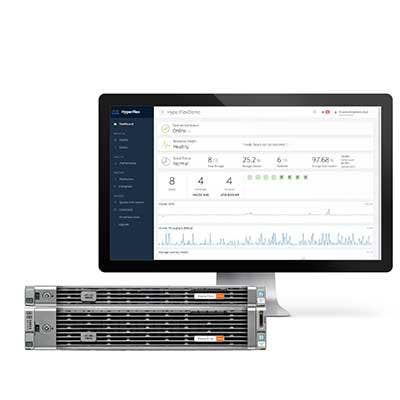Cisco Drives HyperFlex Into Multi-Cloud With Support For Microsoft Hyper-V, Containers

In a move to capitalize on the momentum it has created in the hyper-converged infrastructure space and intensify the fight with the market's other primary players, including Dell EMC and Nutanix, Cisco Systems has launched a slew of updates for its HyperFlex line.
The updates, known as HyperFlex 3.0, are the most significant Cisco has made to its hyper-convergence platform, and are aimed squarely at the multi-cloud market. They include support for Microsoft's Hyper-V hypervisor, support for containers, increased cluster scale with automated resiliency and services that allow any application to be deployed, monitored and managed in any cloud.
The enhancements "give Cisco's customers a more holistic HCI offering with better management, optimization and intelligence options," said Brent Collins, global practice director for data center infrastructure at St. Louis-based solution provider giant World Wide Technology. "The Hyper-V addition gets them in the game for customers that use it."
[Related: Cisco Takes Aim At Counterfeit Sellers In New Jersey, California Federal Suits]
WWT has seen solid HyperFlex adoption among its customers so far, and expects "good" growth this year, said Collins. "A large customer of ours just made the decision to leverage it for a substantial part of their data center virtualization needs," he said. Cisco, according to Collins, "is definitely competitive in the market alongside Nutanix and Dell EMC."
"We think the multi-cloud infrastructure approach is going to lead to a lot of competitive advantage for Cisco," said Scott Mohr, director of the data center cloud global partner organization at Cisco. "This brings a lot of scalability to the market. It allows us to provide a multi-cloud infrastructure solution to host any application. It separates us from our competitors in things like validated designs, the blueprint or cookbook for success in deploying applications."
HyperFlex already support's VMware's ESXi hypervisor, and Cisco said adding Hyper-V allows the company and its partners to offer a wider range of options to customers, and the company is putting big rebate dollars behind the effort.
Cisco's channel operation will provide deal registration, as well as rebates through its Value Incentive Program and other programs. Taken together, top partners that stack all available Cisco profitability programs stand to see payouts in the upper 20-percent range when selling HyperFlex 3.0, said Mohr.
The San Jose, Calif., company is expecting the enhancements to boost technology refresh numbers within its install base, as well as attract first-time customers to Cisco and give partners a significant opportunity to sell a complete Cisco portfolio.
"We have over 60,000 installed UCS customers today, and we're just now scratching the surface on penetration rates," Mohr said. "There's a huge growth opportunity for us in refresh with HyperFlex as well as UCS. And not only does this bring us a multi-cloud infrastructure approach, but with things like Intersight [cloud-based management for UCS and HyperFlex] and a strong portfolio play for UCS in blade and rack, and the S-Series platform for storage, it rounds out a huge market opportunity for partners to make a portfolio play. You're not going to find a vendor that has the breadth and depth of Cisco."
As of November, Cisco had more than 2,000 customers using HyperFlex, which was first released in 2016, and is the result of a combination of Cisco's UCS server platform and the file system from SpringPath, a hyper-convergence software startup Cisco acquired last September.
Cisco expects to report "a significant bump" in adoption, "double digits in terms of growth in customer count" for HyperFlex next month, said Todd Brannon, Cisco director of product marketing. That bump, he said, comes as the result of Cisco's success in differentiating HyperFlex on performance.
"Over the last year, we've communicated the performance advantage we have over Dell's technology, Nutanix's technology," Brannon said. "We have the best performance of any hyper-converged platform in the industry today, and that's what's driving a lot of the momentum. We're seeing a lot more uptake in enterprises as we can power more of those enterprise-critical and heavier workloads. We've got folks running SAP landscapes; MS database in SQL, Oracle. We've even got a few folks running HANA in test-dev on top of HyperFlex."